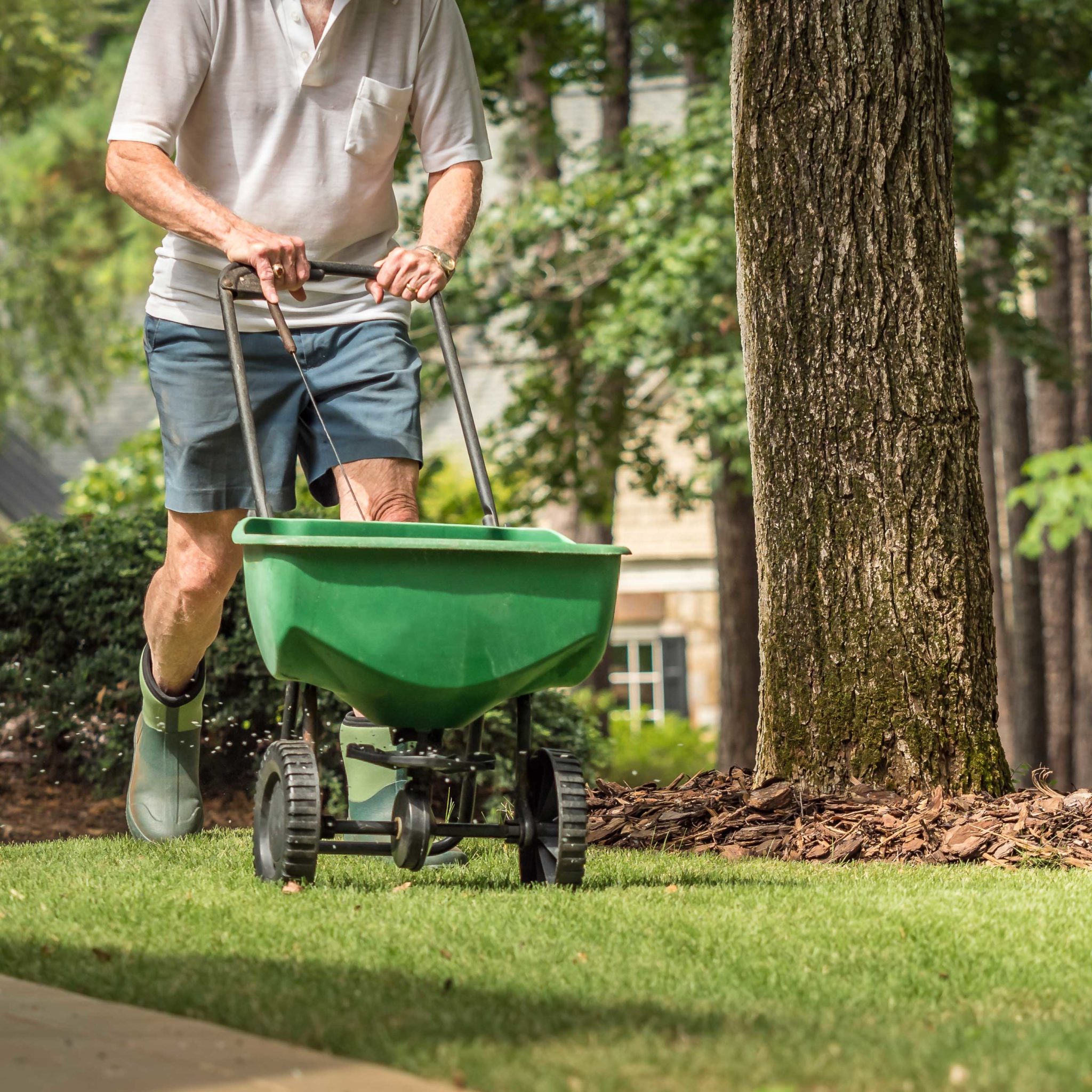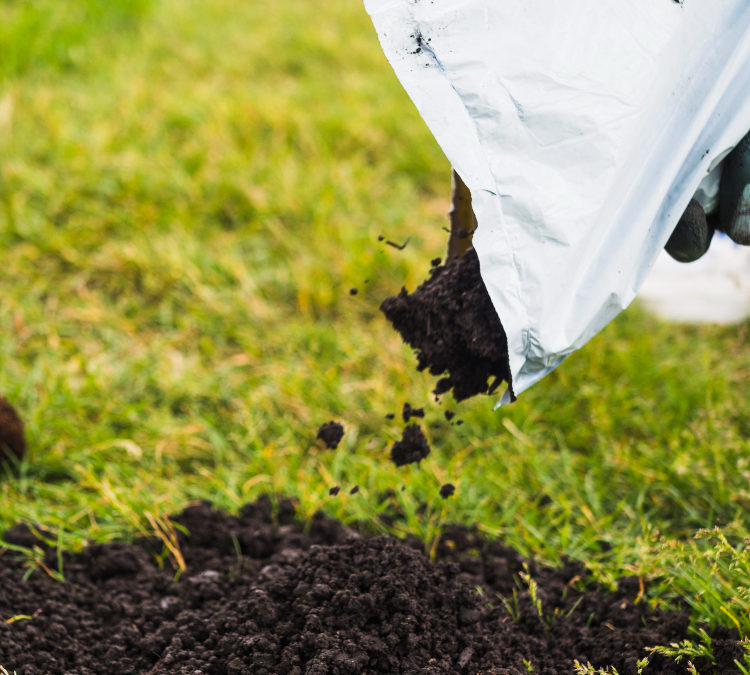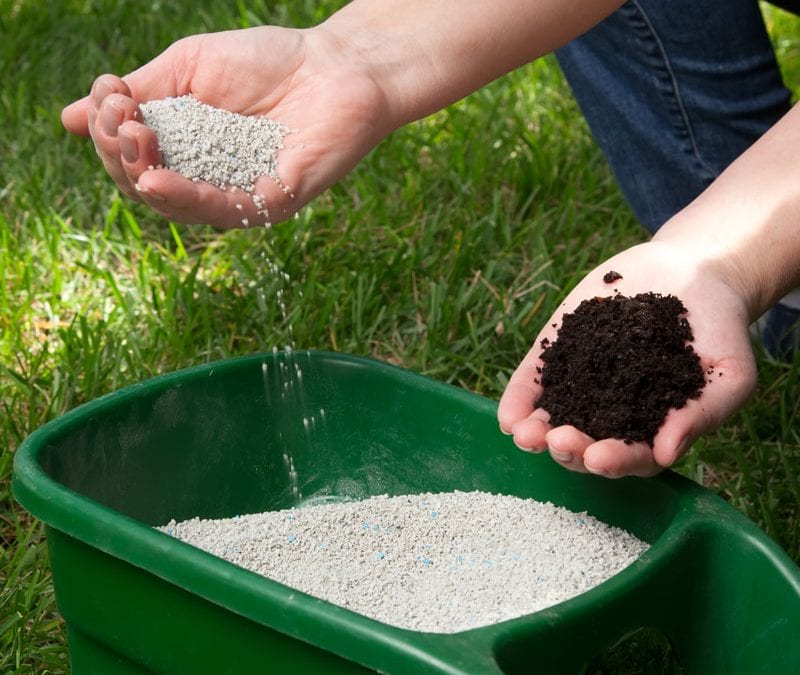Fertilizing At The Wrong Time
“Many homeowners don’t follow a lawn fertilizer schedule. They fertilize when they think their lawn needs it, when they have time or when the stuff is on sale.
Here’s when to fertilize lawn: If your lawn fertilizer schedule is once per year, apply it around Labor Day. Thats when your lawn is the hungriest and when it will respond best to the nutrients it receives. Fertilizing at this time will help replenish food reserves after a long, stressful year of growing and before the harshness of winter sets in.
If your lawn fertilizer schedule is twice per year, apply the second application about the middle of October. This acts like a second helping of much-needed food going into winter. A third application can be added in mid to late spring and can be combined with your crabgrass preventer. A fourth application, if you feel the need, can be added mid-summer. Watch the weather when applying midsummer fertilizers. Fertilizing during hot, humid weather can harm your lawn. An exception would be using an organic fertilizer. They are much more lawn friendly during the dog days of summer.
In the spring, apply just enough fertilizer to help green up your lawn. About half the normal amount will do. Even without fertilizer, your lawn naturally grows quickly as soon as temperatures become consistently higher. Have you ever noticed that grass grows fastest in the late spring and early summer? Why promote even more growth at this time by fertilizing?
Types Of Fertilizer To Use On Lawns
Here are the basic types of fertilizer to use on lawns:
Slow-release You dont have to use slow release fertilizers as often, but they are usually more expensive.
Fast-release You get quick results with a fast-release fertilizer, but you have to apply them in smaller amounts and more frequently. You can burn your lawn with a fast-release fertilizer if you use too much.
Weed and feed Try to identify your weeds before using a weed and feed product and make sure your weed is listed on the product label. Take special care around trees, shrubs, and garden plants.
Organic materials such as compost and manure The essential nutrients arent as concentrated in these types of materials, so you have to use a lot. Compost or dry manure before applying it to the lawn, and be aware that some manures, particularly horse manure, may contain weed seeds.
Liquid fertilizers These arent recommended because they are hard to apply evenly and require frequent applications.
Using A Handheld Broadcast Spreader
A handheld broadcast spreader works well for fertilizing small lawn areas. Walk evenly and slowly, and be sure to overlap distribution patterns slightly with each pass. A small spreader like this also works really well when you have shady areas in your lawn that require a different fertilizer rate than the sunny sections. Some fertilizers combine an herbicide with the lawn food. These products are sold as weed-and-feed lawn care products and are applied using a lawn spreader.
Read Also: Outdoor Fire Pit Patio Ideas
Bulletin #2154 Fertilizing A Home Lawn In Maine
For information about UMaine Extension programs and resources, visit extension.umaine.edu.Find more of our publications and books at extension.umaine.edu/publications/.
Many Maine homes are near ponds, lakes, rivers, and coastal waters, or near ditches and storm drains that can carry pollutants to these waters. Even bodies of water that are miles away can be polluted by excess nutrients such as nitrogen and phosphorus found in common fertilizers we use on our home lawns. The threat of pollution is greatest when these fertilizers are over- or improperly applied. Groundwater can also be contaminated by lawn fertilizers that leach downward. Recent research has provided information that should change the way we choose to fertilize our lawns.
Cool Season Vs Warm Season Grass

Warm season grasses thrive in warm-weather regions, such as the southern United States. It’s best to feed warm season grasses in warm weather as they grow most actively during the heat of summer.
Popular warm season grasses include:
- St. Augustine: Broad dark green blades with a rounded tip
- Zoysia: Prickly, stiff and narrow blades form a carpet-like lawn
- Centipede: Pointed blades with a notch that grows to be dense and soft
Cool season grasses do best where there are extreme temperature fluctuations, such as those in the North, Northeast and Pacific Northwest.
In the North, where cool-season grass types are popular, lawns need to be fed four times a year with each feeding six to eight weeks apart. If your lawn is still green and actively growing in the summer, you can continue to feed it throughout the summer months at the same rate. However, if your grass turns brown during summer heat and drought, temporarily stop feeding until it starts to grow and turn green again in the early fall.
Popular cool seaon grasses include:
- Kentucky Bluegrass: V-shaped with pointed blades, dark green and soft
- Perennial Ryegrass: Pointed blades with visible veins
- Tall Fescue: Dark green, coarse, wide pointed blades with visible veins
Make your lawn fertilizer project easier, with the right products and tools. Find what you need. Use The Home Depot Mobile App to locate products and check inventory. We’ll take you to the exact aisle and bay.
Shop this Project
Read Also: Wood Burning Fire Pit Home Depot
How Soon You Can Fertilize After Seeding Your Lawn
Its not always after seeding that you should apply fertilizerthe best time to fertilize is right before or during the seeding process. Use a starter fertilizer with quick-release nitrogen since that will give the seeds a nutritional boost. When you make fertilizer a part of the seeding process, your grass will grow quicker and is more likely to end up healthy and lush.
How To Apply Lawn Fertilizer For Best Results
Whenever you apply fertilizer, always follow best practices for fertilizer safety. For best results, mow your lawn one to two days beforehand. Then set your spreader to the setting recommended on the product label.
- For drop spreaders, start with two strips across your lawn’s ends. Then work back and forth, overlapping each swath slightly.
- For broadcast spreaders, start on the outside and work in, overlapping slightly as you go.
Always shut the hopper when you stop and turn to prevent a fertilizer pile. When finished, sweep excess fertilizer off hard surfaces, such as sidewalks and driveways, to avoid iron stains and fertilizer runoff.
By following these lawn fertilizer tips, you can keep your grass at the peak of performance, beauty and health. At Pennington, we take pride in providing you with the best in lawn fertilizers and expert advice to help you have a lawn you’re proud to own. Stay connected with our email newsletter for accurate, timely tips and offers to help you make the most of your lawn and home.
*dollarweed, clover, henbit and chickweed
Always read product labels thoroughly and follow instructions, including specific guidance for your grass type.
Pennington is a registered trademark of Pennington Seed, Inc.
UltraGreen is a registered trademark of Central Garden & Pet Company.
Read Also: How To Make A Paver Patio On A Slope
When Is The Best Time To Fertilize A Lawn
The best time to fertilize a lawn is in the evening or on a cloudy day when the grass is wet or at least damp, and with more rain promised.
In terms of season, the best time to fertilize a lawn is in March or April after the last frosts have passed to promote growth, in July as a boost, particularly against hot weather, and in September or October to prepare the lawn for winter weather.
When To Use Compost
Compost does more than feed grass it also builds and feeds soil. Compost contains microorganisms, micronutrients and organic matter items that nourish soil and foster a healthy underground environment in your lawn. When should you use compost? Spread a thin layer over lawns in early spring to fuel strong growth. Any time you plan to aerate, spread compost after aerating to improve soil and give roots a boost. It’s also a good idea to apply compost before overseeding thin turf. Add compost to a lawn by the shovelful in several places.
You May Like: Cedar Columns For Front Porch
Your Last Two Fertilizer Applications Should Take Place In The Fall
Fertilizing your lawn in fall helps restore damage that was caused by the stress of summer heat, promotes nutrient storage for use in the winter, and supports healthy root growth, which creates a healthier lawn in spring. It is best to plan for two fertilizer applications between late August and November. Leverage winters severe weather to help get rid of weeds by also scheduling a weed control application in the fall.
How To Fertilize A Lawn
Fertilizing a lawn the the proper way will keep it growing strongly and densely, but once it’s done, keeping it well fertilized is what will maintain its health and good looks moving forwards. It will also mean your lawn can withstand harsh conditions whether a kids’ football game or bad weather. Even better? Fertilizing a lawn regularly can ensure it’s less likely to suffer from disease, pests and weeds.
Note that fertilizing is in addition to knowing when to add lime to lawns and not a substitute for this.
Recommended Reading: How To Make Your Patio More Private
When To Fertilize The Lawn In Spring And Fall
You should eliminate fertilize your lawn in early spring because plants apply their energy into root development in early spring. If you fertilize too early, the energy will diver into leaf development too early. So, for getting the best results you should apply fertilizer in late spring. And in the fall, experts consulted to apply fertilizer in the early to mid-fall because its the running growth time of plants.
What Fertilizer Do You Use For Orchids

Experienced orchid growers fertilize their orchids weakly, weekly. Orchids need to be fed regularly. Growers suggest using a balanced fertilizer such as 20-20-20 that includes all necessary trace elements. Regardless of the fertilizer formulation you choose to use, it should contain little or no urea.
Also Check: How To Build A Hip Roof Patio Cover
Are Lawn Fertilizers Safe To Use
The majority of lawn fertilizers are safe to use, but if you have pets that like to eat grass, it is worth checking the packaging when you buy for any contraindications, and keeping the pets off the lawn until it has had a good post-feed soaking to ensure the fertilizer has moved off the grass and down into the soil.
How To Choose The Right Fertilizer
The chemical ratios can very in amount depending on your circumstances for fertilizing but there is an easy method to determine which bag of fertilizer is best for your lawn. By checking fertilizer bags or packaging you will find three numbers prominently listed. These numbers tell you how much of each chemical are in the bag. The first number is the amount of nitrogen, the second is phosphorous, and the last number represents potassium. To know how much of each is in the bag, multiply the percentage by the size of the bag. Be sure to read the fertilizer bag to ensure youre using a suitable amount of each chemical for the needs of your lawn.
Recommended Reading: How To Paint Mesh Metal Patio Furniture
When To Fertilize Warm
When to fertilize depends on what kind of grass you have. You want to time fertilizing so it occurs just before grass enters its peak growing phase. If you live in southern areas where lawns feature warm-season grasses, fertilize turf in late spring or early summer, just before grass kicks into high gear. Make a second application in late summer. If your warm-season lawn goes dormant in winter, don’t fertilize after the first of September.
Warm season grass types include bahia, Bermuda, St. Augustine, centipede and zoysia. Warm season grasses typically thrive in frost-free areas and grow best at temps of 75 degrees to 90 degrees.
What Is The Best Lawn Fertilizer
The Top 5 Best Lawn Fertilizers
You May Like: Sliding Glass Patio Doors With Built In Blinds
Using A Broadcast Or Rotary Spreader
A broadcast or rotary spreader works well when you’re fertilizing larger lawn areas. Before filling the hopper, make sure it’s closed. It’s a good idea to fill it on a tarp, so you can easily gather any spilled fertilizer. Apply fertilizer around the perimeter of the lawn first, and then start to move back and forth across turf in an orderly pattern. Overlap application strips slightly to ensure that you cover the whole lawn evenly with fertilizer.
Prepare The Lawn For Fertilizing
It’s best to fertilize a lawn when it’s been prepped in advance. This means taking the lawn mower to it three or four days before you are planning to fertilize it. Once mown, it pays to aerate the lawn, remove any weeds . This is a good time to dethatch a lawn if necessary, too. The night before you plan to fertilize it, give the lawn a light watering, too, as you don’t want to soil to be too dry, or the grass will not absorb the nutrients you are adding to it.
Recommended Reading: How To Clean Patio Furniture Mesh
Should I Water Lawn After Fertilizing
At Master Lawn, we typically say to wait 24 hours before watering your lawn after fertilizing. But it is important to make sure that it does receive a good watering session soon after that 24 hour waiting period. Watering helps the fertilizer to activate and to break down and begin feeding nutrients to the lawn.
When Is The Best Time To Fertilize Your Lawn

The best time for applying fertilizer to your lawn is in the spring, between March and May. Soil temperatures should be 55 degrees Fahrenheit or even warmer before applying fertilizer to cool-season grasses. You can wait until late spring or early summer for warm-season grasses to apply lawn fertilizer.
Also Check: How To Clean Grease Off Patio Pavers
What Is A Good Lawn Care Schedule
Fertilize twice in the fall for cool-season grasses to take advantage of the great growing conditions. shouldFertilize once around the beginning of September and again 6 to 8 weeks later. Only fertilize when the soil is warm enough to allow the grass to grow. The best way to tell if your lawn needs fertilization is to look at it. If the lawn looks healthy and green, then its ready for the fertilizer.
However, if it looks sickly, it may need a little extra help to get the job done. You can check to make sure that your grass is healthy by checking the color of its leaves, which will change from green to yellow to brown to black depending on the type of fertilizer youre using.
How Often You Should Apply Fertilizer To Your Lawn
Though fertilizer has its benefits, you dont want to overdo it. A full feeding is recommended at least 5-6 times per year. You want to feed your lawn when its growing most rapidly. However, you should base the frequency on your climate and the type of grass you have. For example, cool season grasses can be fertilized in late spring, but only if necessary.
Warm season grasses, like Bermuda grass, St. Augustine, zoysia, centipede and buffalo grass, should be fertilized in spring. Depending on the amount of water your grass gets, aim to reapply your fertilizer every 6-8 weeks. Keep a watchful eye on your grass. If it looks thick and green, you can probably skip the feeding. If its starting to look brown or black, give your lawn some TLC.
Don’t Miss: How Tall Does A Lavender Patio Tree Grow
Feeding The Lawn In The Summer And Fall
Warm-season grasses thrive in the heat of the summer and can be fertilized throughout the growing season. However, cool-season grasses are in a survival mode during the heat of the summer. Refrain from applying fertilizer to a lawn in mid- or late-summer if you live in a climate where cool-season grasses are in your lawn seed mix. A cool-season lawn should need nothing other than water and pest management until September.
Most lawn experts recommend a mild dose of a “turf-builder” fertilizer formulation in the early- to mid-fall, while the turf still has several weeks of active growth before dormancy. This application will help build robust root systems going into winter and restart the growing cycle in the spring. You are not looking to return your lawn to the green of summer. Heading into winter, you can expect a natural slowdown of your lawn’s growth and the loss of its green luster.
The More You Know The More Your Grass Will Grow Here Are The Best Ways To Maximize Your Lawn Fertilization Schedule
Understanding when and how to fertilize your lawn is a major component to maintaining a healthy, lush yard. Fertilizers give your lawn a healthier root system while eating up unhealthy nutrients. With some simple steps, youll be on your way to having a lawn that is the envy of the neighborhood.
Recommended Reading: How To Make Your Own Patio Mister
Fertilizing Schedule For Home Lawns
This lawn is damaged as a result of excessive spring fertilizer applications.
Two important factors to consider when fertilizing lawns are how much and when to apply. About three pounds of nitrogen per 1,000 square feet per growing season is suggested for most full-sun lawns in northern Illinois . Split into two or three applications, with each single application of nitrogen being about one pound per 1,000 sq. ft. About half as much nitrogen is suggested for shade lawns. Percent nitrogen in the bag and size of the lawn are calculation variables as shown below.